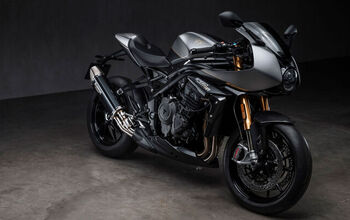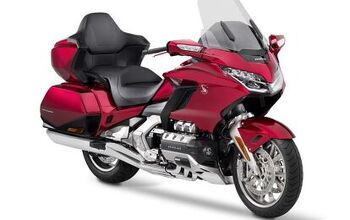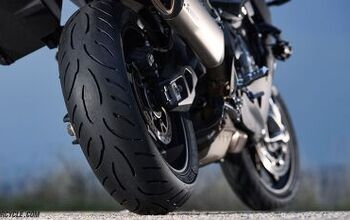MotoGP History & Australian GP
-------------------------------------------------------
FEATURE: AUSTRALIAN GRAND PRIX, PHILLIP ISLAND
-------------------------------------------------------
KEEP IT IN THE FAMILY
It’s a shame that Graziano Rossi is not a great fan of air travel. For the fourth time out of five, a proud father misses the chance to celebrate a World title with his son, because he will not venture up the steps of the "silver bird".
When Valentino Rossi clinched the MotoGP World title at Sepang in Malaysia on Sunday, his father was back home in Italy living every moment of the race and consequent celebrations through a television screen in the early hours of a Sunday morning.
Only once has one of grands prix racing most celebrated father and son relationships been able to celebrate a world title together. That was in 1997 when Valentino won his first world title, the 125cc crown at Brno in the Czech Republic, just a few hours car drive for Graziano. The other triumphs have come at venues impossible to reach by anything other than aero plane and Graziano will not go near them.
Father and son success in grand prix motor cycle racing is nothing new. The most famous family partnership shares the same name, Kenny Roberts. It was only after Kenny Roberts junior emulated his father by winning the 500cc World Championship that he dropped the Junior tag. He’d come of age and he wanted everybody including his dad, to realize just that. They are still the only father and son to win a World title. Kenny senior won three consecutive 500cc World titles between 1978 - 1980. Kenny Junior brought Suzuki the title in Rio three years ago. His father has no fear of flying and was there to celebrate with him.
The first father and son to both win grands prix races were the British pair of Les and Stuart Graham. It was right and proper that the first rider to win the 500cc World Championship in 1949 should produce the first son to win a grand prix 18 years later. Les Graham won the very first World 500cc title riding the British AJS machine but sadly was not alive when his son Stuart won the 1967 50cc TT race in the Isle of Man for Suzuki. It was a poignant moment for son Stuart because father Les had been killed on the very same 60.721km Mountain circuit in 1953.
Following very closely in their footsteps were the Italian Pagani family. Father Nello won two 500cc grands prix for the Italian Gilera factory in 1949, the same year Graham won the title. His victories came in Assen and Monza. He actually scored more points than Graham but with only your three best results counting towards the title, Graham won it by a single point. Nello made up for the 500ccdisappointment by winning the very first 125cc World Championship the same year for Mondial following victories in Berne and Assen.
Amazingly it was again 18 years later that his son Alberto scored the first of his three 500cc victories, riding the Linto to victory at Monza. The Second World War meant that both Graham and Pagani Senior were 37 years old before they won their first grands prix while Stuart Graham was 25 and Alberto Pagani just 21-years-old.
It was nearly three decades later that the Rossi´s became the third father and son to win grands prix. In 1979 father Graziano could have little realized when he won the first of his three grand prix victories riding the 250cc Morbidelli at Rijeka In Yugoslavia, what his son Valentino would go on to achieve. In fact his son was just five months old when Dad beat Australian Greg Hansford that day. Seventeen years later Valentino won his first grand prix on the 125ccAprilia in Brno and the rest is history.
Right up to date and just last month Pablo Nieto at last won a grand prix race and has just another 89 to go before catching up his father Angel. The 23-year-old Spaniard had been waiting five years since his grand prix debut for that day. He won the 125cc race at the Portuguese Grand Prix in Estoril and first to congratulate him was 13 times World Champion Angel.
So just five father and sons have won grand prix races and only the Roberts family shares a World title in the 54 year history of World Championship racing. Perhaps riders during this period have been spending far too long away from home.
-----------------------------------------------------
FACT FILE - AUSTRALIAN GRAND PRIX, PHILLIP ISLAND
------------------------------------------------------
One of the truly great grand prix venues in the world which was designed with motor cycles in mind. The result, is a 2.764 mile track that has hosted some superb races and which is loved by the riders, despite the early spring weather and winds.
Phillip Island is a holiday resort 130kms south-east of Melbourne and linked to the mainland by a bridge. A road circuit on the Island staged early motor races including the first Australian car grand prix in 1928. The track fell into disrepair until 1989 when the new road circuit staged the first ever Australian Motorcycle Grand. To add the icing to the cake it was won by Australian Wayne Gardner.
In 1990 the Australian Grand Prix switched to Eastern Creek on the outskirts of Sydney but to the delight of many, returned to the Island in 1997 and has hosted the event ever since. The track has a variety of undulating corners and a fast down hill 762 meters start and finish straight.
The circuit is situated right on the edge of the Bass Straight which provides plenty of panoramic views but also strong blustery winds. October is early spring in Australia and the weather can be cold and wet but usually stays dry on race day.
Camel Pramac rider Max Biaggi won the 500cc race three years ago, while Tohru Ukawa finished third last year.
------------------------------------------------------
TRACK FACTS - AUSTRALIAN GRAND PRIX, PHILLIP / ISLAND
-------------------------------------------------------
Length: 4.448km
Pole Position: left Width: 13m
Right Corners: five Left Corners: seven
Longest Straight: 900 meters
Constructed: 1956 Modified: 1988
Lap record: Valentino Rossi (Honda) 1m32.233s (2002)
Fastest pole setting lap: Jeremy McWilliams (Proton KR) 1m31.919s (2002)
Race Result 2002: Valentino Rossi (Honda) 42m02.041s
Camel Pramac Pons 2002 riders: Tohru Ukawa third. Max Biaggi sixth.
------------------------------------------------------
COBAS INSIGHT - Antonio Cobas, the Technical Director of Camel Pramac Pons
------------------------------------------------------
Due to its picturesque setting, the wind at this Grand Prix is always an important factor to take into consideration when setting up the bikes. A curious fashion has been apparent in recent years where holes are drilled into the sides of the fairings to diminish the influence of the strong winds on the bike for the series of fast corners on the opposite side of the track to the start and finish straight. Although it does not appear to be a fast track, Phillip Island is one of the tracks with the highest average speed in the World Championship (174.205 km/h).
Even though it does not have a particularly long straight (900 meters), the corners leading onto and at the end of the start/finish straight are very fast and are taken at over180km/h. This means the riders can reach the end of the straight at more than 320km/h. There are also two other sections of the track where they ride at under 100 km/h.
The bike set-up at this circuit is made taking into account the corners, which are taken very quickly and with the throttle open. This means stiff rear springs, especially in the section with fast, continuous corners where the bike must be fairly rigid to absorb the power. Also, if we fitted soft rear springs the front end would lose resistance and the steering would be vague.
Another characteristic of the circuit is the tyre-wear. After the track surface was re laid recently, Phillip Island now has one of the most abrasive surfaces in the World Championship. If we add to that the fact that there are many corners where the bike accelerates early through the corner with the throttle fully open, the resulting tyre-wear is very high. For this reason, on certain occasions for the race we have to find a compromise between the setting for the suspension and the durability of the tyres. As a general rule, the race here is normally one of the most exciting in the World Championship as there are many points in the circuit where it is relatively easy to overtake and also as we are near the end of the season the riders generally take more risks.
--------------------------------------------------------
This service is provided by Camel, title partner of the Camel Pramac Pons team.
More by Sean Alexander



























Comments
Join the conversation